Table of Contents
At the heart of the modern supply chain lies Last Mile Delivery Management Software, the final step that ensures products reach their ultimate destination. This delivery segment represents a pivotal moment where speed and efficiency converge to define the consumer experience. Technological advancements have propelled last-mile logistics to the forefront, with delivery management software pivotal in navigating this complex endeavor.
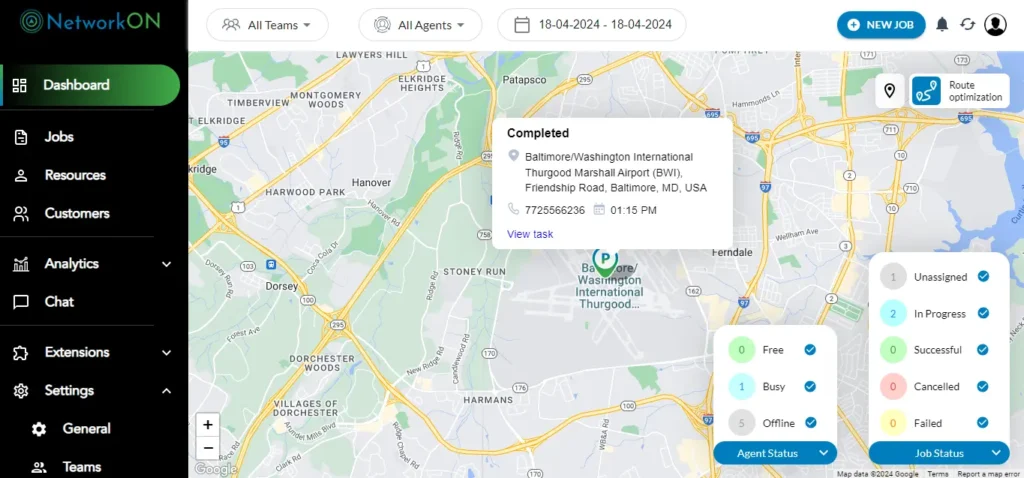
Today, customers anticipate more than just swift delivery; they demand precision, flexibility, and real-time updates. The rise of e-commerce has rewritten the rules, and businesses are under pressure to adapt. Enhanced tracking capabilities, dynamic routing, and personalized delivery options are no longer luxuries but necessities in this fast-evolving environment. Addressing these expectations, last-mile delivery management software emerges as a vital tool, offering a sophisticated response to the intricate demands of last-mile logistics.
Challenges and Solutions in Last Mile Delivery
Last-mile delivery encompasses the final step of the logistics process, a period characterized by several nuanced challenges. Enterprises face complications related to escalating costs, expectations of swift delivery, and the imperative of maintaining high service quality. These challenges often act as barriers preventing impeccable customer service and operational efficiency.
Common Hurdles in Last Mile Delivery
Cost Effectiveness: Maintaining profitability while minimizing shipping costs presents a significant struggle. Efficiently routing deliveries to reduce fuel consumption and time on the road remains a complex task.
Speed of Delivery: Customers frequently demand rapid deliveries. Meeting these demands requires sophisticated logistical coordination that traditional methods often need help to provide.
Service Quality: Ensuring packages arrive in perfect condition, providing customers with real-time updates, and managing returns efficiently are all crucial for maintaining service quality.
Practical Solutions and the Role of Software
Advancements in digital solutions offer a beacon of hope for resolving these challenges. Last-mile delivery management software emerges as a pivotal tool, streamlining operations and enhancing service offerings. Engagement with such technologies equips businesses with robust capabilities to tackle the intricacies of the last mile.
These software solutions can optimize delivery paths by leveraging real-time routing algorithms. This optimization reduces fuel expenditure and diminishes each parcel’s transit time. The software allows for dynamic rerouting, accounting for unforeseen circumstances like traffic or weather conditions.
Furthermore, last-mile delivery management software enriches the customer experience through transparent tracking systems. Customers can monitor their packages, which escalates trust and mitigates the frustration associated with uncertainty.
Incorporating advanced software systems facilitates the seamless integration of various stages of the delivery process. Warehouse management, carrier selection, and customer service channels conjoin within a singular interface, smoothing out potential disruptions.
As businesses strive to enhance service quality, software solutions assist in managing returns more efficiently. Organizing reverse logistics becomes more manageable, ensuring that resources and customer satisfaction are upheld.
Revolutionizing Delivery: The Technological Leverage in Last Mile Logistics
Technology is a pillar in refining last-mile delivery processes. Sophisticated software systems boost efficiency by optimizing routing, automating customer communications, and increasing transparency. These improvements are not merely incremental changes; they are transformative for businesses tackling the complexity of last-mile logistics.
GPS technology, for instance, has become integral to last-mile delivery, ensuring that drivers reach their destinations using the most efficient routes. This minimizes delays and lowers fuel consumption. Additionally, the Internet of Things (IoT) plays a pivotal role by enabling the connection of various devices within the delivery ecosystem, which aids in real-time tracking and managing vehicles and parcels.
Selecting Optimal Last Mile Delivery Management Software: Core Features
Last-mile delivery management software is a transformative solution in the logistics industry, optimizing the final leg of the delivery (commerce) process. This software addresses the complexities of last mile (transportation) by enhancing package tracking and ensuring efficient package delivery. Integrating with freight transport systems provides real-time updates and visibility into each shipment, reducing delays and improving reliability. As a result, businesses can offer superior customer service while minimizing costs and operational inefficiencies. This advanced logistics tool streamlines the entire delivery process, making it indispensable for modern supply chain management.
Diverse solutions exist in last-mile delivery management software, yet certain key features set the industry standards. Recognizing these features can propel logistics operations forward, enhancing efficiency and customer satisfaction.
Essential Features of Last Mile Delivery Management Software
- Real-time tracking and visibility for logistics operators and customers ensures a transparent delivery process. Access to tracking information empowers all parties by providing a window into the delivery lifecycle.
- Dynamic route optimization serves as a pivotal tool. By adapting routes based on traffic, weather, and other variables, this feature reduces delays and fuel consumption, resulting in more timely deliveries and lower operational costs.
- Data analytics play a transformative role. Leveraging the power of data leads to informed decision-making. It fosters continuous improvement by analyzing trends, performance, and customer feedback.
When logistics operators deploy software that includes these capabilities, they streamline their processes and deliver an exceptional customer experience. By harnessing these sophisticated features, companies advance their last-mile delivery services.
Unveiling the Advantages of Last Mile Delivery Management Software
Companies leveraging last-mile delivery management software witness a significant enhancement in delivery performance. This software streamlines the distribution process, ensuring packages arrive promptly and boosting customer satisfaction. Businesses meet and often exceed customer expectations by optimizing delivery routes and schedules.
When last-mile delivery management software is in place, operations become more efficient. Drivers can navigate deliveries with improved efficiency and with the tailored guidance the software provides. Route optimization features contribute to less time on the road and reduced fuel consumption, further underscoring the value of these systems.
Cost reduction remains a pivotal advantage of integrating this type of software. Through intelligent route planning, companies minimize unnecessary mileage, thus saving fuel expenses. Intelligent resource allocation also means that every delivery vehicle is used to its maximum capacity, reducing the need for additional trips or vehicles and lowering operational costs.
- Customers enjoy transparency and delivery punctuality, which leads to higher satisfaction levels.
- Drivers utilize less time to complete deliveries, promoting increased productivity.
- Businesses experience decreased overhead expenses due to refined dispatching and routing.
Real-time Tracking and Visibility in Deliveries
Live tracking and visibility rank high among customer expectations and serve as a linchpin for logistics businesses seeking to enhance operational efficiency and communication strategies. Real-time data is a transformative feature, enabling customers to monitor their orders precisely. The prevailing expectation for this capability has led to its adoption as a standard industry practice. Businesses, in turn, benefit from monitoring delivery progress, responding to potential issues, and streamlining their resource allocation.
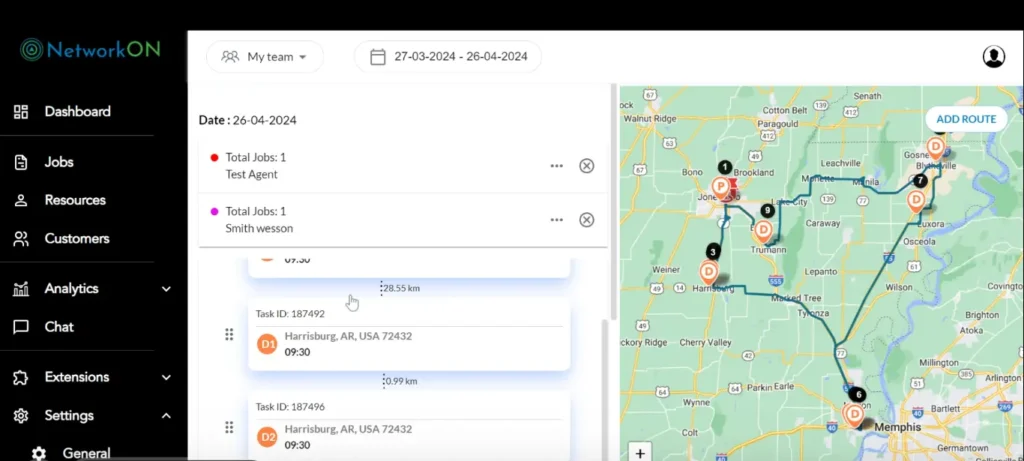
Utilizing last-mile delivery management software has a notable impact on resource management. Dispatchers have a comprehensive view of delivery operations, allowing for dynamic rerouting in response to traffic conditions, driver availability, and unexpected delays. In essence, this agility in operational response is not an added luxury but a requisite for maintaining pace with the rapid evolution of delivery logistics.
Beyond operational benefits, real-time tracking fosters transparent communication with customers. The ability to provide customers with up-to-the-minute status information can significantly reduce the volume and frequency of inquiry calls and emails. This transparency has fostered a new communication paradigm, shifting from reactive to proactive customer service, and as a result, has substantially elevated the customer experience.
- Customers enjoy unparalleled oversight of their deliveries with GPS-enabled tracking features.
- Businesses leverage real-time data to optimize route planning and execution, ensuring that resources are utilized to their greatest potential.
- Enhanced communication protocols, built upon real-time delivery updates, mitigate customer anxiety and enhance overall satisfaction.
Enhancing Operations with Real-time Delivery Data
Real-time visibility is not merely about keeping the customer informed; it’s a strategic operational tool. Managers extract valuable insights from live data to avert potential snags and make informed decisions swiftly. These decisions, once based solely on historical data and forecasting, now benefit from the immediacy of real-time input, thus enabling a more adaptive and responsive approach to last-mile delivery challenges.
Impact of Last Mile Delivery on Customer Satisfaction
Delivering orders to customers swiftly and accurately enhances their overall experience with a brand. Last-mile delivery management software plays a pivotal role in achieving this objective. A positive delivery experience reinforces customer loyalty and directly boosts the likelihood of repeat business.
Direct Reaction of Customers to Last Mile Efficiency
A seamless last-mile delivery can be the decisive factor differentiating a retailer from competitors. When packages arrive on time, in perfect condition, and with transparent communication, customers respond with approval, which is demonstrated through higher satisfaction scores. Furthermore, accommodating delivery preferences and offering flexibility can result in positive word-of-mouth that extends brand reach.
Simply put, Last-mile delivery management software is a crucial tool for modern businesses, especially in the retail and food sectors, such as restaurants and online food ordering services. This software streamlines business processes by optimizing vehicle routes, reducing costs, and improving efficiency. The integrated tracking system allows businesses to monitor the real-time location of their products, ensuring timely deliveries and enhancing customer satisfaction. Effective instant messaging on mobile phones keeps all stakeholders informed, facilitating seamless coordination. As businesses strive to meet the growing need for fast and reliable delivery services, last-mile delivery management software becomes an indispensable component of their operational strategy.
Sustainable Practices in Last Mile Logistics
Modern last-mile delivery management software supports a transition to more sustainable logistics operations. Features such as route optimization and electric vehicle (EV) compatibility ensure delivery networks operate with a reduced environmental impact. Adopting these eco-friendly functionalities aligns with broader corporate sustainability objectives.
Route optimization technology strategizes the most efficient paths for delivery vehicles. This capability conserves fuel and diminishes carbon footprints by computing the shortest and least congested routes. Deliveries are completed with fewer miles traveled, leading to a decline in overall emissions.
Electric vehicle integration within delivery software has become a focal feature as companies shift towards electric fleets. Software that can manage EV charging needs and incorporate them seamlessly into routing decisions is indispensable. This feature encourages the adoption of EVs by ensuring their effective deployment in the delivery process.
Analytics from delivery management platforms also monitor sustainability metrics. Reports can measure fuel savings, emission reductions, and other key sustainability performance indicators. Companies can scrutinize data to track their progress against environmental goals and make informed, eco-conscious decisions.
Dynamic delivery slot scheduling creates opportunities to reduce the carbon footprint. By predicting the best times for delivery, when roads are clear and customers are available to receive packages, the software decreases the likelihood of repeated delivery attempts, thus reducing unnecessary travel.
Eco-Friendly Features of Last Mile Delivery Software
- Route Optimization: Minimizes miles driven and reduces emissions.
- EV Compatibility: Manages EV logistics, facilitating an eco-friendly fleet transition.
- Sustainability Analytics: Provides robust data to measure and improve environmental performance.
- Dynamic Slot Scheduling: Lowers the chance of failed deliveries and the associated additional trips.
Last-mile delivery software also intersects with a firm’s green initiatives by promoting a data-driven approach. The wealth of insights available allows businesses to streamline last-mile logistics and pledge tangible eco-friendly outcomes as part of their corporate responsibility.
Streamlining Expenditures with Advanced Last Mile Logistics Strategies
Last-mile delivery management software is the linchpin of modern logistics, offering capabilities crafted to slash operational costs. Cutting-edge algorithms within these systems enable dynamic routing, minimizing unnecessary travel and fuel consumption. This optimization is a boon for efficiency and a financial cornerstone for businesses aiming to thrive amidst rising delivery expectations.
Dynamic Routing and Automated Dispatch
Last-mile delivery software eradicates the guesswork from dispatch operations by allocating deliveries based on real-time conditions and driver availability. Automated processes ensure that the most cost-efficient routes are always employed, and this deliberate precision translates directly into reduced fuel costs and maximizes driver productivity.
Efficient Utilization of Resources
Resource utilization stretches beyond mere routing. The intelligent assignment of deliveries, accounting for variables such as parcel dimensions and destination proximity, ensures that cargo space is maximized. This strategic loading translates into fewer trips, conserving fuel and lessening vehicle wear and tear, prolonging asset lifespans.
Reducing Failed Delivery Attempts
Delivery management platforms often include predictive analytics to decrease the likelihood of failed delivery attempts. By precisely predicting the best delivery times, couriers experience fewer instances of customer absence, thus avoiding the additional costs associated with re-delivery.
Detailed Reporting for Continuous Improvement
Data collection is an automated byproduct of last-mile delivery management systems. These robust analytics enable managers to identify trends and inefficiencies, fostering a culture of continuous improvement. Leveraging detailed reports allows decision-makers to enact strategies that further curtail expenses and augment delivery operations.
- Optimized driver routes lead to reduced fuel costs and less overtime work.
- Maximized cargo space results in fewer trips, conserving resources.
- Automated delivery schedules and customer notifications diminish the number of failed deliveries.
- Data-driven insights prompt operational refinements, fostering cost-effective practices.
Last-mile delivery management software allows businesses to adapt to shifting logistics landscapes while maintaining financial prudence. These systems’ merits are not confined to their technological prowess; they are distinctly reflected in the bottom line.
Last Mile Delivery Analytics and Data-Driven Decision Making
Harnessing the power of analytics transforms last-mile delivery operations. By systematically interpreting data, companies optimize delivery routes, thereby accelerating the delivery process. Advanced analytics make light work of historical delivery data, turning what once was an impenetrable wall of numbers into actionable insights. These insights inform strategic decisions that streamline operations, reduce wasted effort, and cut excess costs.
Unlocking Efficiency through Data Analysis
Data analysis provides a means to scrutinize performance metrics critically. Typical metrics include delivery times, success rates, and customer feedback scores. Trends identified through these metrics guide adjustments in routing and delivery strategies, resulting in more packages delivered per hour. Consequently, this increases delivery capacity without inflating operational costs.
Enhancing Strategic Business Growth
Investments in analytics bear fruit in improving current operations and paving the way for expansion. Data-driven strategies support scaling delivery networks to accommodate a larger volume of orders. With precise forecasting models, businesses allocate resources to meet future demand, fostering sustainable growth.
Fueling Continuous Improvement
Continuous monitoring and analysis of last-mile delivery foster a culture of constant improvement. Managers leverage real-time data to adapt to variables such as traffic patterns and weather disruptions. By analyzing feedback and delivery outcomes, they continuously refine the customer experience, maintaining a competitive edge in the marketplace.
- The software optimizes routes by evaluating delivery time frames and customer locations, significantly reducing fuel consumption and costs.
- Through predictive analytics, businesses anticipate high-demand periods, ensuring adequate staffing and resource allocation.
- Real-time analysis of delivery performance indicators enables swift interventions that rectify bottlenecks before they escalate.
- Insights into customer preferences and behaviors guide personalized service offerings, bolstering customer retention rates.
Data holds the key to unlocking the potential of last-mile delivery. With comprehensive analytics and data-driven decision-making at the helm, companies fortify their delivery operations against inefficiency and stagnation. As the last-mile delivery sphere becomes ever more competitive, those companies that master the art of analytics-based optimization will not only survive but thrive.
Peering Into the Horizon: Future Trends in Last-Mile Delivery Technology
Advancements in last-mile delivery technology continue to evolve, reshaping the landscape of logistics and consumer expectations. With digital innovation advancing rapidly, certain trends stand out as potential game-changers in the industry.
Exponential Growth in Autonomous Delivery Vehicles
Integrating autonomous delivery vehicles into last-mile logistics is no longer a fringe concept. Autonomous drones and ground vehicles are expected to reduce human intervention as technology matures significantly. This transition will likely streamline operations and minimize delivery times while circumventing current road congestion challenges.
Enhanced Personalization Through AI
Artificial Intelligence (AI) is poised to personalize last-mile delivery experiences. By analyzing vast data sets, AI can optimize routes in real-time and predict consumer preferences, allowing for hyper-personalized delivery options such as choosing the exact time or location of delivery even when the order is already en route.
Blockchain for Greater Transparency and Efficiency
Blockchain technology is speculated to create unprecedented transparency within last-mile delivery processes. By securing data and providing a tamper-proof ledger, all parties involved can trace the delivery journey in real-time, leading to increased trust and efficiency.
Internet of Things (IoT) to Enhance Package Security and Handling
IoT is set to play a crucial role in monitoring the condition and location of items during transit. Sensors and smart tags will enable real-time tracking of environmental conditions, ensuring that sensitive goods are transported within safe parameters, thus elevating the standard of delivery services.
- Robotics and Automation in warehouses and hubs will continue to reduce the time spent sorting and handling parcels, expediting the overall delivery process.
- Redefinition of urban logistics spaces, with micro-fulfillment centers and urban warehousing, will bring products closer to end consumers, significantly reducing last-mile delivery times.
- Advances in Software Algorithms will likely result in even more dynamic routing capabilities, with the ability to adapt instantly to changing traffic patterns, weather conditions, and customer availability.
Subscription Models for Last Mile Delivery Services
The subscription economy could influence last-mile delivery, with businesses potentially offering subscription-based delivery models that guarantee same-day or instant delivery for a regular fee, aligning with the growing customer desire for convenience and immediacy.
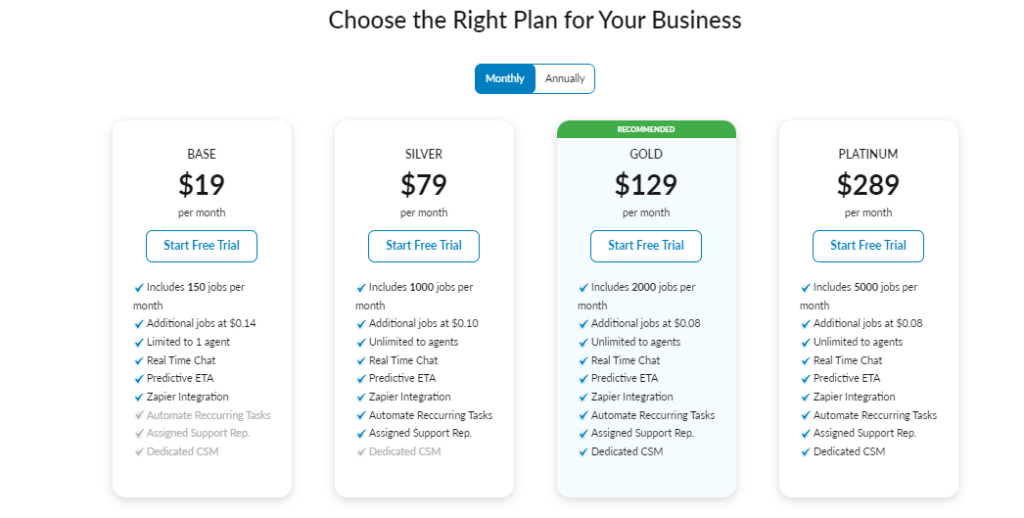
As these technologies integrate more deeply into everyday logistics operations, they may transform not only how items reach customers but also how customers and businesses view the delivery experience altogether. The next phase in last-mile delivery technology promises enhancements that extend well beyond speed and efficiency, potentially leading to a new standard for what consumers consider “standard” delivery.
Enhancing Driver Performance with Mobile Application Support
Mobile applications specifically designed for last-mile delivery drivers streamline daily operations, offering an array of features to navigate commonly faced challenges. Drivers gain the ability to update delivery statuses in real-time, access optimal routing information, and communicate effectively with dispatchers, which all together bolsters delivery efficiency.
Optimized Routing: Applications typically include advanced GPS technology that not only suggests the fastest routes but also accounts for variables like traffic conditions and delivery windows.
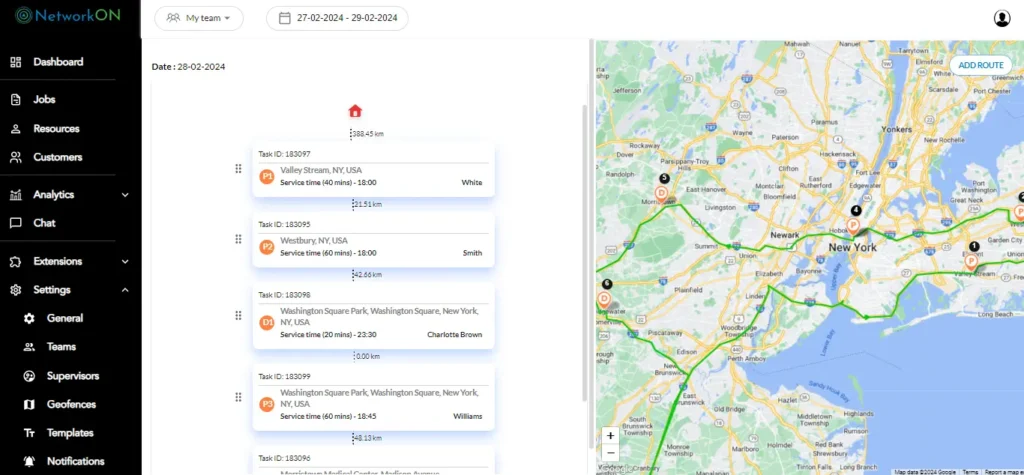
Real-time Communication: Instant messaging and update features enable seamless communication between drivers and central dispatch, ensuring that any adjustments or issues can be addressed promptly.
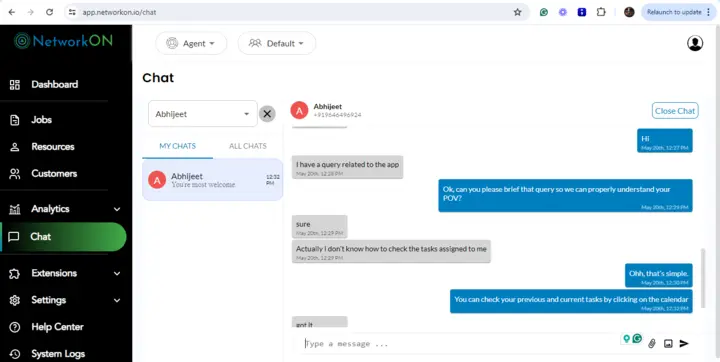
Electronic Proof of Delivery: Drivers can collect signatures or photos through the app, facilitating a paperless and verifiable proof of delivery process.
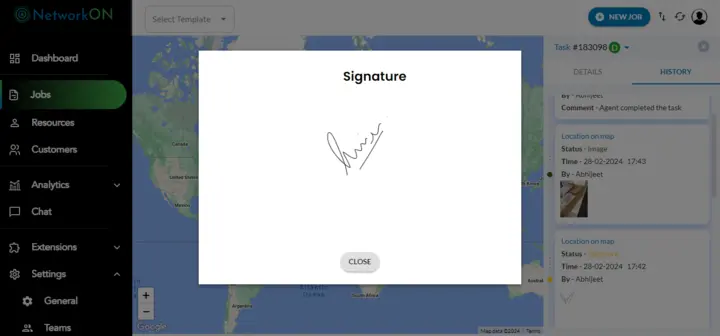
Delivery Scheduling: Drivers have the capacity to view and manage their delivery schedules within the application, reducing time spent on manual planning.
Such applications empower drivers with information at their fingertips, resulting in quicker decision-making and effective problem-solving. By accessing vital information through mobile devices, drivers maneuver through the last mile with increased confidence and reduced risk of delays or errors. Moreover, this directly corresponds with elevated customer satisfaction due to more reliable and punctual deliveries.
Ultimately, mobile application support is not just a tool; it reshapes the entire delivery landscape where driver agility and satisfaction are significantly improved, driving the gears of last-mile logistics forward with precision and adaptability.
Ensuring Compliance and Safeguarding Data in Last Mile Deliveries
The landscape of last-mile delivery is complex, with many regulations that vary by location and industry. Last-mile delivery management software optimizes routes, tracks packages, and ensures delivery operations meet specific regulatory requirements. Adherence is not optional; failure to comply can result in penalties, revoked licenses, or worse, loss of customer trust.
Adherence to Local and Global Regulations
Last-mile delivery management software functions as a guardian of compliance, equipped to handle the intricacies of varying regulations. The software guides users to ensure that each delivery and its operations fall within legal parameters, municipal traffic rules, environmental restrictions, or broader international trade laws. Automated updates keep delivery operations in line with real-time legal changes, mitigating non-compliance risk.
Robust Security Frameworks
With frequent data breaches headlining the news, strong cybersecurity measures must thread through the fabric of last-mile delivery software systems. These platforms manage and protect large volumes of customer data against unauthorized access, cyber-attacks, and other security risks. They incorporate sophisticated encryption and authentication protocols, reassuring stakeholders of their commitment to data protection.
- Data Protection Compliance: Last-mile delivery management software is typically designed to comply with data protection regulations such as GDPR, alleviating concerns about customer privacy.
- Risk Assessment Tools: Many platforms include tools that proactively identify and quantify potential security threats, allowing for immediate remediation.
- Audit Trails: Various software solutions offer detailed audit trails, providing transparency and accountability by recording every action made within the system—a critical feature in the event of a security audit or investigation.
Companies must be stringent guardians of the law and customer data in the delivery sector. Last-mile delivery management software stands at the forefront of these efforts, providing essential tools and protocols to maintain the highest regulatory compliance and security standards.
Key Takeaways
Enhanced Customer Experience: Modern consumers expect precision, flexibility, and real-time updates. Last-mile delivery management software meets these demands with advanced tracking, dynamic routing, and personalized delivery options, enhancing overall customer satisfaction.
Operational Efficiency: The software addresses major challenges in last-mile delivery, such as cost management, speed, and service quality. Optimizing routes, tracking, and managing returns effectively boost operational efficiency.
Technological Integration: Key technologies like GPS, IoT, machine learning, and automated dispatch are central to last-mile logistics. These advancements improve efficiency, reduce costs, and offer a seamless customer experience.
Sustainability: Last-mile delivery software supports eco-friendly practices through route optimization, electric vehicle integration, and detailed sustainability analytics. These features help reduce the environmental impact of delivery operations.
Cost Reduction: Efficient route planning and resource allocation minimize fuel costs and reduce the likelihood of failed delivery attempts. This leads to significant cost savings and maximized operational efficiency.
Data-Driven Insights: Analytics are crucial in optimizing delivery routes and improving efficiency. Data-driven decision-making supports strategic growth and continuous improvement in last-mile delivery operations.
Future Trends and Innovation: The future of last-mile delivery includes autonomous vehicles, AI-driven personalization, blockchain for transparency, and IoT for enhanced security. These innovations promise to revolutionize the logistics landscape further.
Conclusion
With the rapid evolution of the logistics landscape, the adoption of last-mile delivery management software no longer remains an option but a necessity for businesses aiming to thrive. In this competitive arena, these advanced systems provide more than mere convenience—they are a keystone for achieving efficiency, customer satisfaction, and operational cost-effectiveness. Those who leverage such technology position themselves at the forefront of innovation and customer-centric service.
Integrating last-mile delivery management software is a transformative catalyst for logistics operators. Companies that channel investment into cutting-edge solutions garner the ability to harness real-time data, optimize routes, and ensure seamless communication across the delivery network. With these capabilities, logistics services can anticipate and exceed customers’ evolving demands, who expect swift and transparent shipping processes.
Demand for quick and reliable delivery services escalates continuously, urging logistics businesses to propel forward and adapt. By integrating robust last-mile delivery management solutions, companies unlock the potential to streamline operations, enrich customer experiences, and ultimately secure a significant edge in a highly competitive market.
Redefine your logistics operations and elevate customer satisfaction with superior last-mile delivery management software from NetworkON. Invest today—explore options, attend demos, and optimize your last-mile deliveries!
Frequently Asked Questions
What is Last Mile Delivery Management Software?
Last-mile delivery management software is a digital solution designed to optimize the final step of the delivery process, ensuring that products reach their ultimate destination efficiently and effectively. It includes real-time tracking, dynamic routing, and customer communication tools to enhance delivery speed, reduce costs, and improve the overall customer experience.
How does Last Mile Delivery Management Software improve efficiency?
The software improves efficiency by optimizing delivery routes using real-time data, reducing fuel consumption and delivery times. It also automates dispatch and resource allocation, minimizes the risk of failed deliveries, and provides detailed analytics for continuous operational improvement. These features help streamline the delivery process, saving time and reducing operational costs.
What technologies are integrated into Last Mile Delivery Management Software?
Key technologies include:
GPS for precise navigation.
IoT for real-time tracking and condition monitoring.
Machine learning for predictive analytics and route optimization.
Automated dispatch systems.
These technologies enhance last-mile delivery efficiency, reliability, and transparency.
How does Last Mile Delivery Management Software support sustainability?
The software supports sustainability by optimizing delivery routes to reduce fuel consumption and emissions. It can integrate with electric vehicle fleets, manage EV charging logistics, and provide detailed sustainability analytics to track and improve environmental performance. These eco-friendly features help companies reduce their carbon footprint and align with corporate sustainability goals.
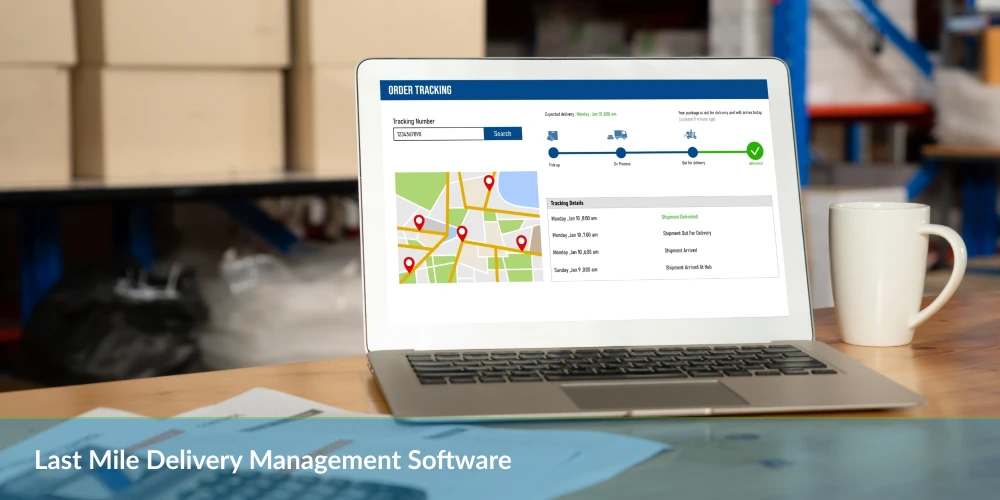




0 Conversations